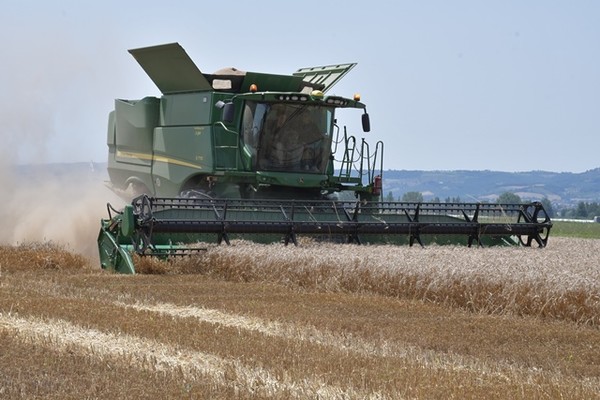
Digital agriculture, the third Green Revolution
There were two conferences set up for the EIMA Show for examining the prospects for digital agriculture and the applications not only at the level of agronomic techniques but also the issues of safety and insurance
A scientific conference on the issue Digitalization and Connectivity, the New Challenge for Agricultural Mechanization was held on Friday, July 13, at the Casalina farm to present an understanding of present conditions and prospects for digital and precision agriculture. The assembly was opened by Alessandro Malavolti, the president of the Agricultural Machinery Manufacturers Federation, FederUnacoma, who recalled the historic steps taken for the application of electronics and IT to farming. He made the point that at present digital systems are capable of producing an impressing amount of data and the challenge now is to combine and create systems making it possible to effectively use them for agricultural operations. Luigi Sartori on the University of Padua faculty declared that these systems provide an enormous amount of information of superior quality allowing them to be used in farming for which we now have accessible technologies. Take a look at such examples as control of fertilization and the distribution of seeds and more complicated technologies such as those based on usable mapping, for example, for the electronic regulation of dosing plant treatment products. Marco Vieri from the University of Florence said the present problem is organizing the “chaotic universe of technological prospects” and avoiding the use in agriculture of systems altered by other sectors which might not be adequate. Danilo Monarca from the University of Tuscia said the selection and certification of data of specific interest for agriculture is thus the new frontier of research on which 22 the Agrarian Faculties in Italy are now at work, as well as other specialized research centers and scientific associations such as AIIA, the Italian Society of Agricultural Engineering. Monarca went on to say that the application of IT on which research is elaborating is very broad and also covers safety. Consider the case of the CO-BOT, which means the robotic collaboration which assists farm workers in crop operations and exoskeletons which control and correct the posture of the operator while performing tiresome manual operations. As never before there is now collaboration between universities, the sector of contractor users and professional organizations. In his statement, Roberto Guidotti of CAI referred to the objectives of research and named production efficiency as the leading one, environmental compatibility and the traceability of the products which correspond to the priorities of farmers to remain competitive on the markets. The Umbria Coldiretti president, Albano Agabiti affirmed that the use of digital technologies can be defined as “the Third Green Revolution”. The link between agriculture and the universities has led to a great project for developing software for managing data which will become the exclusive property of the farmers and now being worked on through the collaboration of Coldiretti and the Universities of Tuscia and Perugia are eight PEI projects centered on precision farming. The Green Revolution is certain to have a strong impact on Italian agriculture, not only for rationalizing production processes but also monitoring and managing the risks associated with the volatilita of the yields. Hail, freezing temperatures, snow, heavy and concentrated rainfall alternating with dry spells are factors which exponentially increase risks in the primary sector and influence agriculture income. On the same issue, a conference on the Casalina farm on Saturday, July 14, on The Management of Risks in Agriculture: Prospects for 4.0 Agriculture for Farms promoted by Asnacodi, the National Condifesa Association, an organization which works in the sector of accident prevention and the management of risks in farming. Taking part were Albano Agabiti and Paola Grossi, the president and CEO of Asnacodi respectively; Angelo Frascarelli, the director of Ce.sa.r, Center of Agriculture and Rural Development; Gianni Dalla Bernardina, president of C.A.I., Agro-mechanics and the Italian Farmers Confederation; Francesco Martella, president of the Umbria Federation of Agronomic and Forestry Doctors and FederUnacoma President, Alessandro Malavolti. Relateurs reported that risks in agriculture have shown a substantial increase over the past ten years to the point that unexpected market and extreme weather conditions more and more unforseen have led to the failure of many farming enterprises. For this reason, the primary sector cannot ignore insurance which must evolve in line with the new requirements of the sector. On the same issues, the front of 4.0 agriculture technologies is certain to play a key role. Malavolti said, “Thanks to the black box arriving for the agricultural machinery sector it’s possible to minimize fraud and therefore reduce the weight of risk for the insurance companies.” The same point is associated with the certification of damage. Already now available are innovative machines equipped with electronic devices able to collect very complicated operational data which cannot be altered for evaluating damages.








